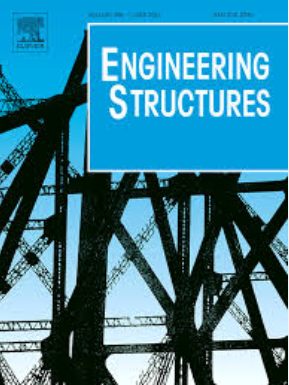Automatic detection of subsurface defects in concrete structures using state-of-the-art deep learning-based object detectors on the infrared dataset
IF 5.6
1区 工程技术
Q1 ENGINEERING, CIVIL
引用次数: 0
Abstract
Coupling infrared thermography (IRT) with deep learning is a potential approach to address the limitations of conventional IRT-based concrete delamination identification. However, it remains under-explored, mainly due to the scarcity of infrared data. This study examined numerous advanced object detectors, including Faster R-CNN, SSD, and the variants of YOLO versions (YOLOv5, YOLOv6, YOLOv7, YOLOv8, YOLO-NAS, and YOLOv9) to comprehensively evaluate their applicability on a self-prepared infrared dataset comprising 12,000 images of artificial defects. The results demonstrated that most of the selected models worked efficiently on the IRT dataset with precision, recall, F1-score, and AP50 greater than 91 % and real-time speeds higher than 45 FPS. The effectiveness of each model was elucidated, and the most suitable frameworks for delamination detection systems were proposed. Interestingly, newer versions of the selected YOLO models failed to surpass their predecessors. Moreover, larger variants did not outperform smaller ones within each YOLO version. Additionally, the effects of various IRT experimental conditions, image processing techniques, and data augmentation strategies on the model’s performance were thoroughly investigated. Consequently, the capabilities and limitations of the automated approaches presented in this work form a solid foundation for further studies on automatically detecting internal defects in concrete structures using deep learning models and IRT inspection data.
求助全文
约1分钟内获得全文
求助全文
来源期刊

Engineering Structures
工程技术-工程:土木
CiteScore
10.20
自引率
14.50%
发文量
1385
审稿时长
67 days
期刊介绍:
Engineering Structures provides a forum for a broad blend of scientific and technical papers to reflect the evolving needs of the structural engineering and structural mechanics communities. Particularly welcome are contributions dealing with applications of structural engineering and mechanics principles in all areas of technology. The journal aspires to a broad and integrated coverage of the effects of dynamic loadings and of the modelling techniques whereby the structural response to these loadings may be computed.
The scope of Engineering Structures encompasses, but is not restricted to, the following areas: infrastructure engineering; earthquake engineering; structure-fluid-soil interaction; wind engineering; fire engineering; blast engineering; structural reliability/stability; life assessment/integrity; structural health monitoring; multi-hazard engineering; structural dynamics; optimization; expert systems; experimental modelling; performance-based design; multiscale analysis; value engineering.
Topics of interest include: tall buildings; innovative structures; environmentally responsive structures; bridges; stadiums; commercial and public buildings; transmission towers; television and telecommunication masts; foldable structures; cooling towers; plates and shells; suspension structures; protective structures; smart structures; nuclear reactors; dams; pressure vessels; pipelines; tunnels.
Engineering Structures also publishes review articles, short communications and discussions, book reviews, and a diary on international events related to any aspect of structural engineering.
 求助内容:
求助内容: 应助结果提醒方式:
应助结果提醒方式:


